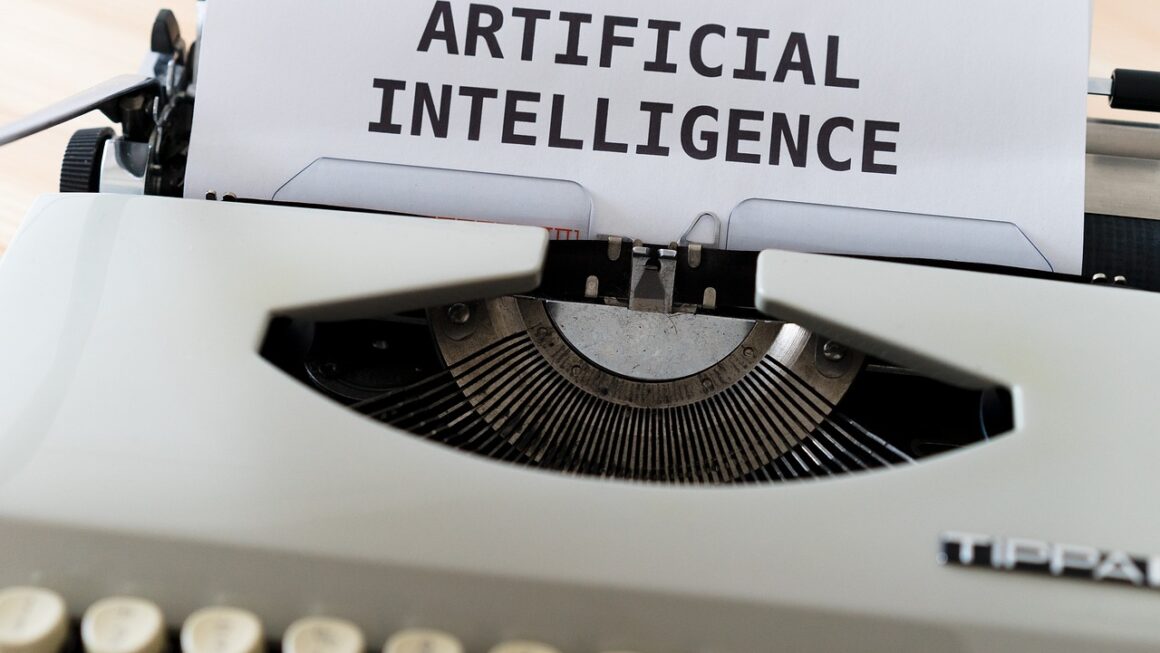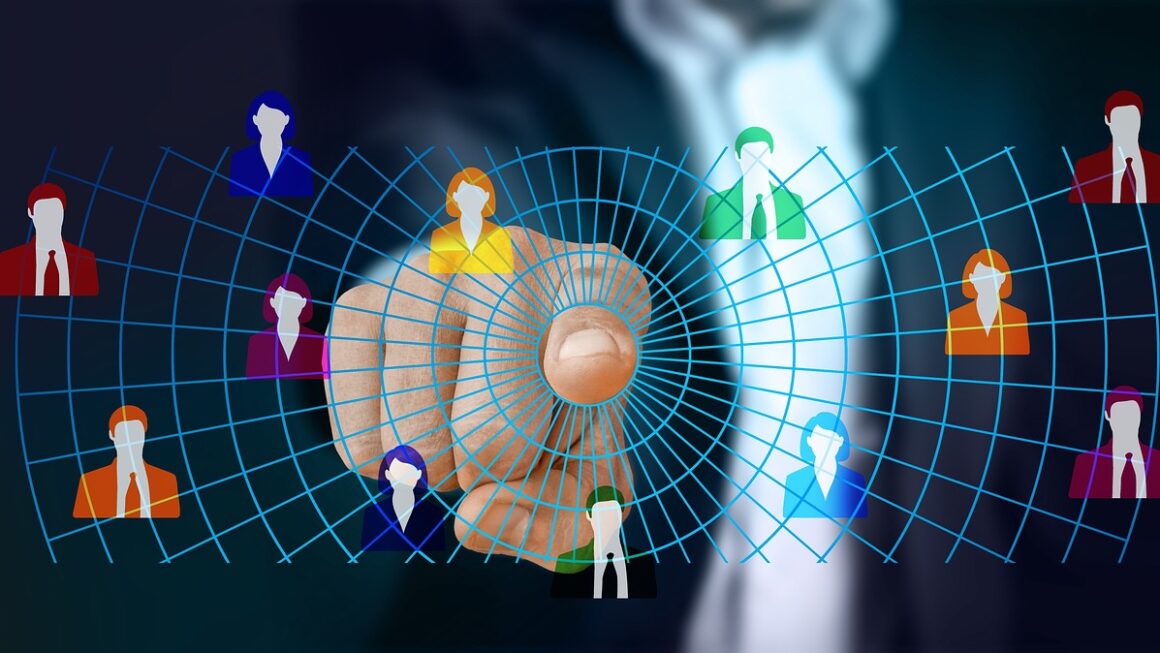Deep learning, a fascinating subfield of machine learning, is rapidly transforming industries and powering innovations we once only dreamed of. From self-driving cars to personalized medicine, deep learning algorithms are driving breakthroughs across various sectors. This blog post provides a comprehensive exploration of deep learning, covering its fundamental principles, applications, and future trends.
What is Deep Learning?
The Foundation: Neural Networks
- At its core, deep learning utilizes artificial neural networks with multiple layers (hence the “deep”).
- These networks are inspired by the structure and function of the human brain, attempting to mimic how we learn and process information.
- Each layer in a deep neural network learns to extract increasingly complex features from the input data.
How Deep Learning Differs from Traditional Machine Learning
- Feature Extraction: Unlike traditional machine learning, where features are often hand-engineered, deep learning models automatically learn relevant features directly from the raw data. This is a huge advantage, as it eliminates the need for domain experts to manually define these features.
- Data Dependency: Deep learning algorithms typically require vast amounts of data to train effectively. The more data, the better the model can learn intricate patterns and make accurate predictions. Think petabytes of images, text, or audio.
- Computational Power: Deep learning models are computationally intensive, requiring powerful hardware, such as GPUs (Graphics Processing Units) or TPUs (Tensor Processing Units), for training. The sheer size of these models necessitates advanced computational resources.
- Complexity: Deep learning architectures can be incredibly complex, involving millions or even billions of parameters. This complexity allows them to model highly non-linear relationships in the data.
A Simple Analogy: Image Recognition
Imagine teaching a computer to identify cats in images. With traditional machine learning, you might manually define features like “whiskers,” “pointed ears,” and “fur texture.” Then, you’d train a classifier to recognize cats based on these features. With deep learning, you simply feed the model thousands of cat images and let it learn these features automatically. The first layers might learn to detect edges and corners. Subsequent layers combine these to recognize shapes, and deeper layers eventually learn to identify complex features like eyes, noses, and ultimately, cats.
Deep Learning Architectures
Convolutional Neural Networks (CNNs)
- Purpose: Primarily used for image and video processing.
- Key Feature: Convolutional layers, which apply filters to the input to extract features.
- Practical Example: Image classification, object detection, facial recognition. CNNs power applications like identifying objects in self-driving cars, diagnosing diseases from medical images, and powering facial recognition on smartphones.
- How it Works: CNNs leverage the principle of shared weights across different locations in an image. This allows them to detect the same feature regardless of its position. They also use pooling layers to reduce the spatial size of the representation, making the model more robust to variations in the input.
Recurrent Neural Networks (RNNs)
- Purpose: Designed for processing sequential data, such as text and audio.
- Key Feature: Recurrent connections that allow the network to maintain a memory of past inputs.
- Practical Example: Natural language processing (NLP), machine translation, speech recognition. Think Google Translate, Siri, and chatbots.
- Limitations: Traditional RNNs can struggle with long-term dependencies due to the vanishing gradient problem.
Long Short-Term Memory Networks (LSTMs)
- Purpose: An improved version of RNNs designed to address the vanishing gradient problem.
- Key Feature: Memory cells that can store and access information over long periods.
- Practical Example: Time series analysis, language modeling, music generation. LSTMs are used in predicting stock prices, generating realistic text, and even composing music.
Transformers
- Purpose: Revolutionized NLP by introducing the attention mechanism.
- Key Feature: Attention mechanism, which allows the model to focus on the most relevant parts of the input sequence.
- Practical Example: Machine translation, text summarization, question answering. Transformers are the backbone of models like BERT, GPT-3, and others that power many state-of-the-art NLP applications.
- Advantages: Transformers are highly parallelizable, leading to faster training times compared to RNNs. They also excel at capturing long-range dependencies in text.
Applications of Deep Learning
Healthcare
- Medical Image Analysis: Detecting tumors, diagnosing diseases, and assisting with surgical planning.
- Drug Discovery: Identifying potential drug candidates and predicting their effectiveness.
- Personalized Medicine: Tailoring treatment plans based on individual patient data. According to a recent report by Grand View Research, the deep learning in healthcare market is expected to reach $4.79 billion by 2027.
Finance
- Fraud Detection: Identifying fraudulent transactions and preventing financial crime.
- Risk Management: Assessing credit risk and predicting market fluctuations.
- Algorithmic Trading: Developing automated trading strategies.
Transportation
- Self-Driving Cars: Enabling vehicles to navigate roads and avoid obstacles.
- Traffic Optimization: Improving traffic flow and reducing congestion.
- Logistics and Supply Chain Management: Optimizing delivery routes and managing inventory.
Natural Language Processing
- Machine Translation: Translating text from one language to another.
- Chatbots: Providing automated customer service and answering questions.
- Sentiment Analysis: Analyzing text to determine the emotional tone.
Training Deep Learning Models: A Practical Guide
Data Preparation
- Data Collection: Gathering a large and diverse dataset relevant to the task. The quality and quantity of data are paramount.
- Data Cleaning: Removing errors, inconsistencies, and outliers from the data.
- Data Preprocessing: Scaling, normalizing, and transforming the data to make it suitable for training.
Model Selection
- Choosing the appropriate architecture based on the task and the data. Consider factors like the type of data (image, text, etc.), the complexity of the task, and the available computational resources.
- Experimenting with different architectures to find the best performing one.
Training and Optimization
- Loss Function: Defining a metric to measure the performance of the model.
- Optimizer: Selecting an algorithm to update the model’s parameters based on the loss function (e.g., Adam, SGD).
- Hyperparameter Tuning: Adjusting the model’s hyperparameters (e.g., learning rate, batch size) to improve performance. Tools like Keras Tuner or GridSearchCV can help automate this process.
- Regularization Techniques: Using techniques like dropout and weight decay to prevent overfitting. Overfitting occurs when the model learns the training data too well and performs poorly on unseen data.
- Monitoring: Tracking the model’s performance during training to identify potential issues. Tools like TensorBoard provide visualizations of training metrics.
Evaluation and Deployment
- Evaluation: Assessing the model’s performance on a held-out test set.
- Deployment: Integrating the trained model into a production environment. Consider using cloud platforms like AWS, Google Cloud, or Azure for deployment.
- Monitoring: Continuously monitoring the model’s performance in production to ensure it maintains its accuracy. Retraining may be necessary as new data becomes available.
Ethical Considerations in Deep Learning
Bias and Fairness
- Deep learning models can inherit biases from the data they are trained on, leading to unfair or discriminatory outcomes.
- It’s crucial to identify and mitigate bias in the data and the model. Techniques like adversarial debiasing and data augmentation can help.
- Example: A facial recognition system trained primarily on images of one demographic group may perform poorly on other groups.
Transparency and Explainability
- Deep learning models can be difficult to interpret, making it hard to understand why they make certain predictions. This is often referred to as the “black box” problem.
- Efforts are being made to develop more explainable AI (XAI) techniques. Methods like LIME and SHAP can help to understand the importance of different features in the model’s predictions.
- Transparency is particularly important in high-stakes applications like healthcare and finance.
Privacy
- Deep learning models can be used to infer sensitive information about individuals from their data.
- Privacy-preserving techniques, such as federated learning and differential privacy, can help to protect user data.
Conclusion
Deep learning is a powerful tool with the potential to revolutionize many aspects of our lives. By understanding its fundamental principles, exploring its diverse architectures, and addressing its ethical considerations, we can harness its power for good and create a better future. As deep learning continues to evolve, it will undoubtedly shape the world in profound and unexpected ways. Keep exploring, keep learning, and keep pushing the boundaries of what’s possible with deep learning!




